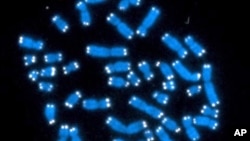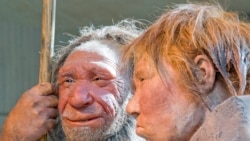Would you like to know where your ancestors came from? British and American scientists may have found answers for you. They have developed a new algorithm to study deoxyribonucleic acid, also known as DNA -- the building blocks of life.
The algorithm is a step-by-step operation for solving problems. It is called “Geographic Population Structure,” or GPS. The report was prepared by researchers from the University of Sheffield in England, and the University of Southern California. It was published in the journal Nature Communications.
The researchers say GPS can find a village or tribe where genes became mixed as far back as 1,000 years ago, during population movements or invasions. At such times, people from groups that were separated earlier came together and had children.
The British and American scientists tested their algorithm by studying genetic information from 200 individuals. The people were from 10 villages on the Italian island of Sardinia. GPS correctly placed 25 percent of the people directly in their villages. Most of the other individuals were placed within 50 kilometers of their villages. A test involving more than 20 islands in the Pacific Ocean produced similar results. In all, 98 percent of the information proved correct.
The scientists say the new method may be important not only for learning about ancestors, but also for health reasons. They say that knowing one’s genetic code may show what conditions and sicknesses may be likely to affect a person.
But valuable as it may prove to be, there are more-traditional ways that people can learn about their ancestry. Some families pass information about family history to the next generation. In turn, those children pass the information on to their children.
And some people have their DNA studied through what is called bio-geographical sequencing. This method places people correctly within about 700 kilometers in Europe. But the rate of success is much lower in other parts of the world.
This story was narrated by Anna Matteo and Christopher Cruise. It was written in Special English by Jerilyn Watson from a report by the VOA newsroom.






